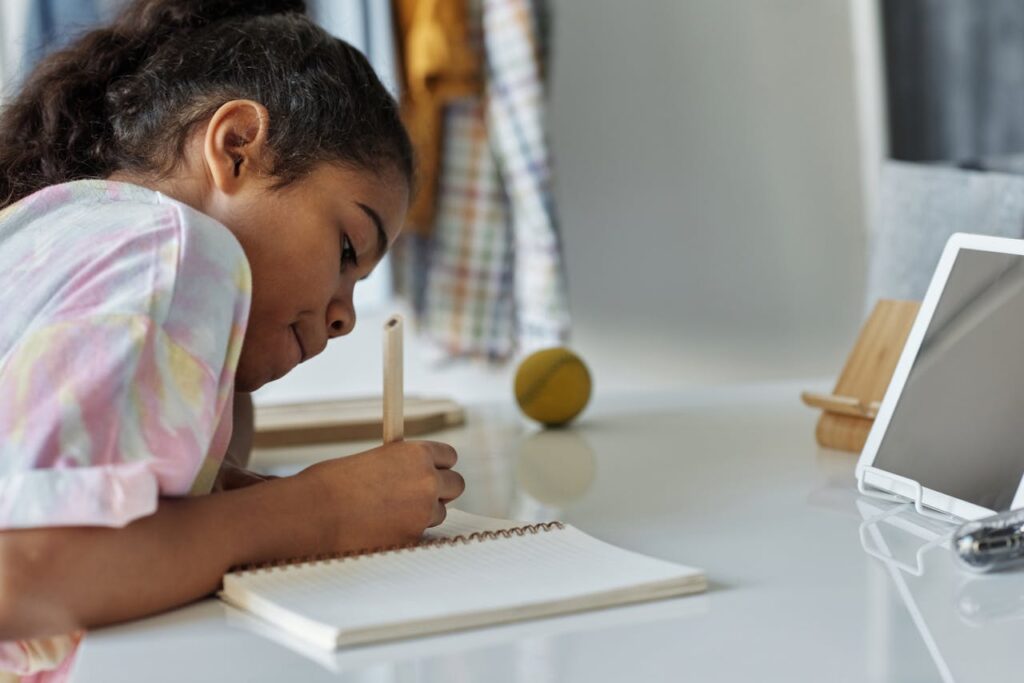“Mommy, I want to be an artist.” my 4-year-old would tell me whenever she wanted to embark on a creative adventure either by drawing or painting. The wonderful world of drawing has always been a source of entertainment in my household. It is a simple way to connect, play, and boost creativity.
The act of drawing is not just a creative outlet. Drawing serves a vital role in a child’s development as early as infancy through to the adolescence stages. As soon as your little one can get a hold of a jumbo crayon or pencil she will inevitably make her first scribble.
Babies are born naturally curious about their surroundings, parents should therefore provide safe non-toxic materials for them to experiment and explore without restrictions on their creativity. If you are anything like me, you will have no recollection of the first time your little one made the first scribble. After all, it is not typically seen as significant as the first walk or first word. But as simple as it may seem, this marks the beginning of the stages of drawing development.
Drawing is a fundamental form of communication and expression that allows children to express the world around them from their viewpoint. It also fosters the development of fine motor control and social skills. I know that drawings from very young children may not seem like much as we routinely crumple up and throw them away in the garbage hoping that they don’t accidentally stumble upon them. Don’t get me wrong I am not telling you to save them. I am telling you not to look at it as just trash but as a fundamental part of child development.
Drawing has its developmental milestones or stages through which a child’s artistic skills should progress just as a child would be assessed for speech, motor skills, and physical development. Being aware of the developmental stages of drawing allows us to know how our little ones are developing so we can find ways to support them.
Below I will go through the drawing stages of development as denoted by Viktor Lowenfeld in his book “Creative and Mental Growth” 1987. Lowenfeld’s theory was based on the premise that all children will go through these phases. No stage can be skipped. Children tend to move through these various stages with a degree of fluidity, as some stages tend to overlap. There is no way to speed up the stages, so the information serves to find age-appropriate activities for your little one.
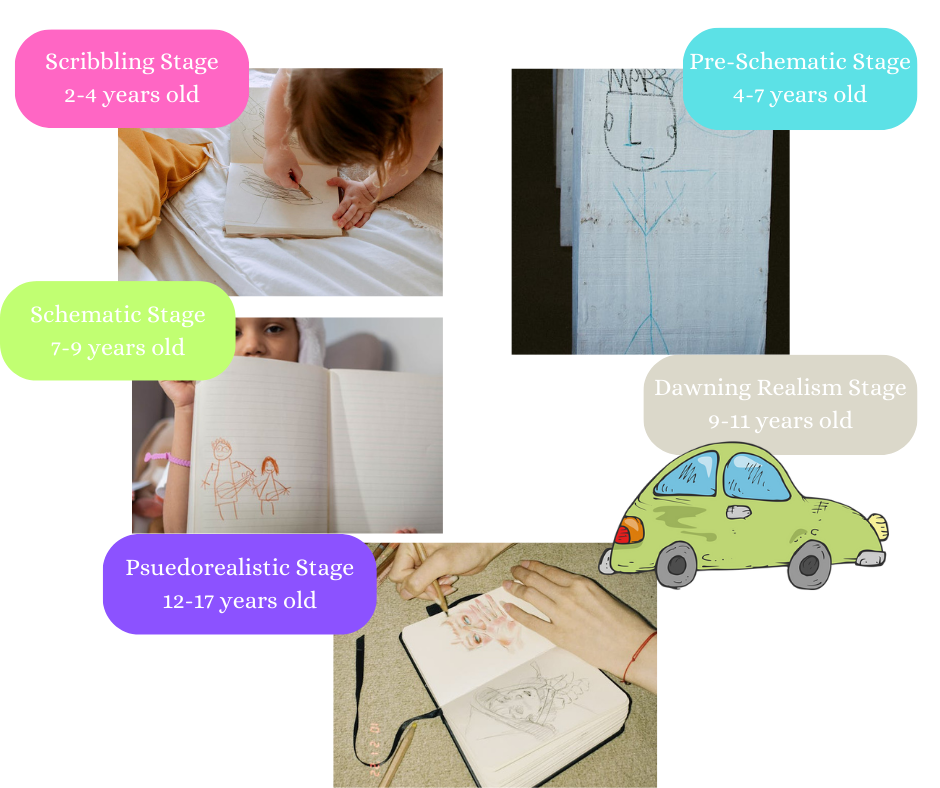
What are the Drawing Stages of Development in Children?
Scribbling Stage (2-4 years old)
This stage is the beginning of self-expression. It focuses on the drawing process and not on the final product.
What to expect
– Motor activity using larger muscles of arm
– Scribbles or uncontrolled markings as they build fine motor control
– Grasp pencil or crayon with whole hand
– Experiment with shapes, vertical lines, and colors
– Excited about the rapid movement of the whole arm/ hands
– Telling stories about the scribbles
The scribbling stage is the first stage of drawing development. It is normally around 2 to 4 years of age. Children’s drawings evolve as they acquire more control over their fine motor skills. They start to experiment with different basic shapes, vertical lines, and colors, to create simple drawings that may represent objects or people in their world. During the scribble stage, children are still developing their hand-eye coordination and spatial perspective so their drawings may appear abstract or scribbled.
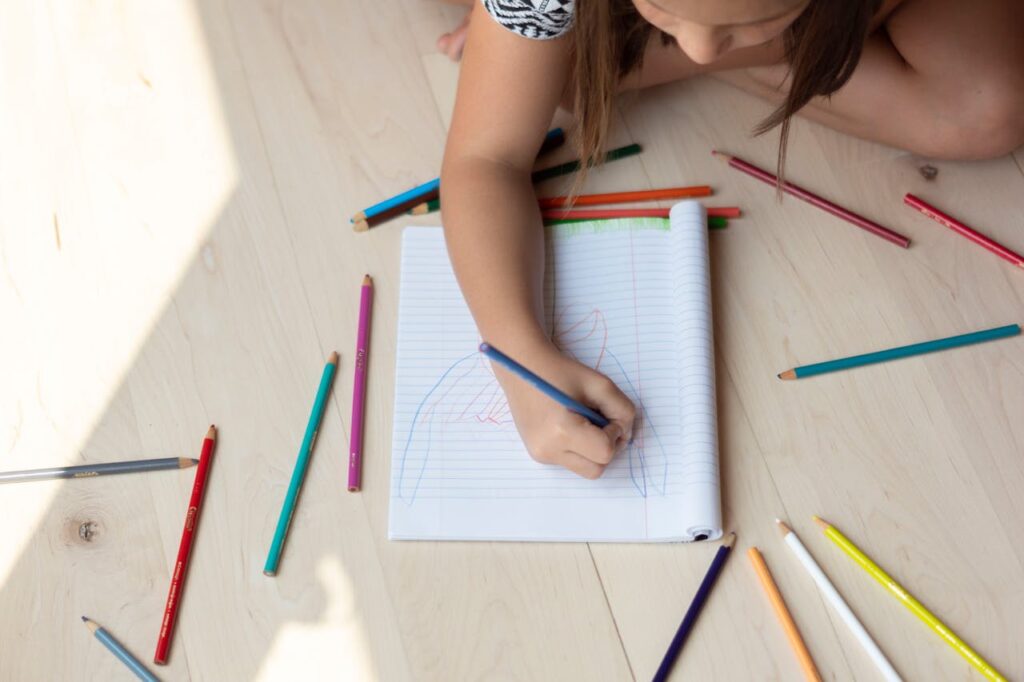
How can parents and teachers support toddlers’ drawing skills?
1. Provide them with a designated art area with the appropriate art supplies for their age.
2. Display artwork in a designated area
3. When partaking in creative activities use contrasting color crayons, markers, and paint that differentiates them from the object to be colored.
4. Encouraging children to draw and color within the lines of coloring books
5. You can build language skills by laying out the different colored crayons/markers and allowing them to name and choose which color they would like to use.
6. Take nature walks with your little one and give them a chance to explore nature by observing the different textures and colors of objects in their environment and allowing them to collect natural objects while on the walks.
7. Visit art galleries and museums
8. Provide quality picture books
9. Encourage the child to move at their own pace.
10. Allow them to describe what they draw in their own words
11. Ask questions that appeal to the senses rather than the object itself. “What color is it?” “What sound does it make?” “How did I make you feel?”
Pre-Schematic Stage (4-7 years old)
They love the process and take pride in the result.
What to expect
– Drawing recognizable shapes; can copy a square or triangle
– Use of circular shapes, vertical lines
– The colors used will not match to color of the object in real life
– Children’s drawings usually have odd placement of objects all around
As children enter the pre-schematic drawing stage the child’s art usually represents their family members along with themselves. They will first try to draw human figures. Their first attempt at constructing human figures usually starts with the body parts head and legs, then later, their mental perception of the body and arms. Their drawing skills become more refined. This is the stage that is recognized by the demonstrated awareness of the concept of space. Children during the pre-schematic stage will start to use colors to represent objects and scenes in their drawings.
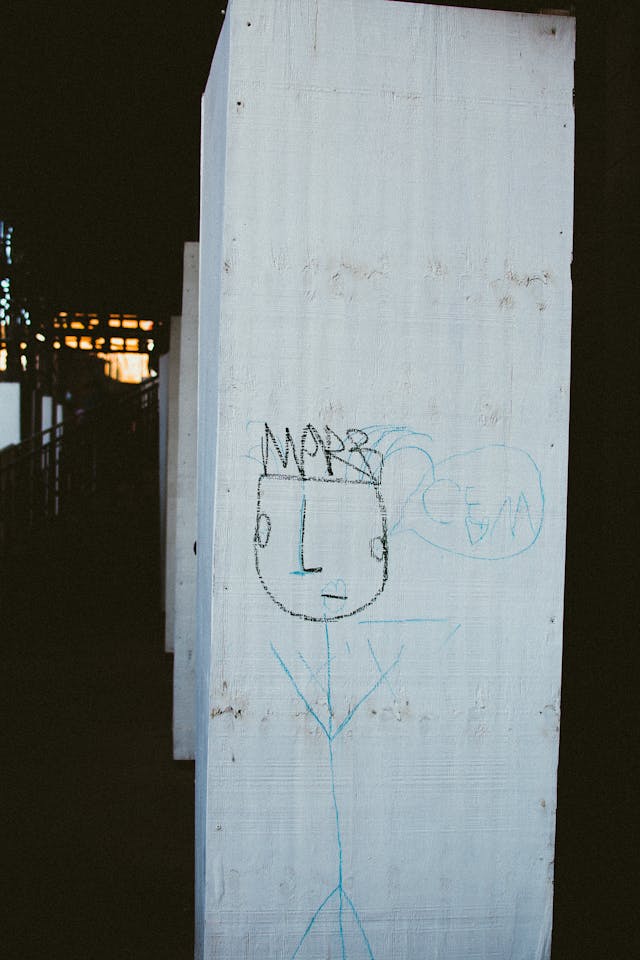
How can Parents and caregivers support?
1. Encourage children to draw from their imagination and not focus on getting the details right.
2. The placement and size are usually a reflection of the importance they play in their imagination so again do not correct them.
3. Parents need to provide preschoolers with a supportive environment by stimulating their thinking and feeling.
4. Make them aware of their body parts and their natural surroundings.
5. Introduce your little one to subject matters that are relatable to them and their environment. This may include the relationship of size between them and their mother, father, siblings, immediate family, and home. Also the emotional relationship between them and their pets, stuffed animals, favorite dolls, and special events such as their birthday party. You can also explore the relationship between themselves and brushing their teeth, eating their food, watching TV, or playing on a swing.
Schematic Stage (7-9 years old)
You will see children develop their style of drawing.
What to expect
– Objects are placed spatially correct
– The human body is made up of geometric shapes
– Colors reflect as they appear in reality
– Easily identifiable shapes and objects
– Exaggeration of proportions between humans and objects to show strong emotions
– During the schematic stage, children begin to draw more detailed and realistic drawings, using geometric shapes, perspective, and proportion to represent objects and scenes accurately. They begin to develop their schemas during this stage which are their individualized concepts to represent human beings. In their drawings of people, they now draw the entire human being with arms, legs, head, and body. They will now start to match the appropriate color to the objects.
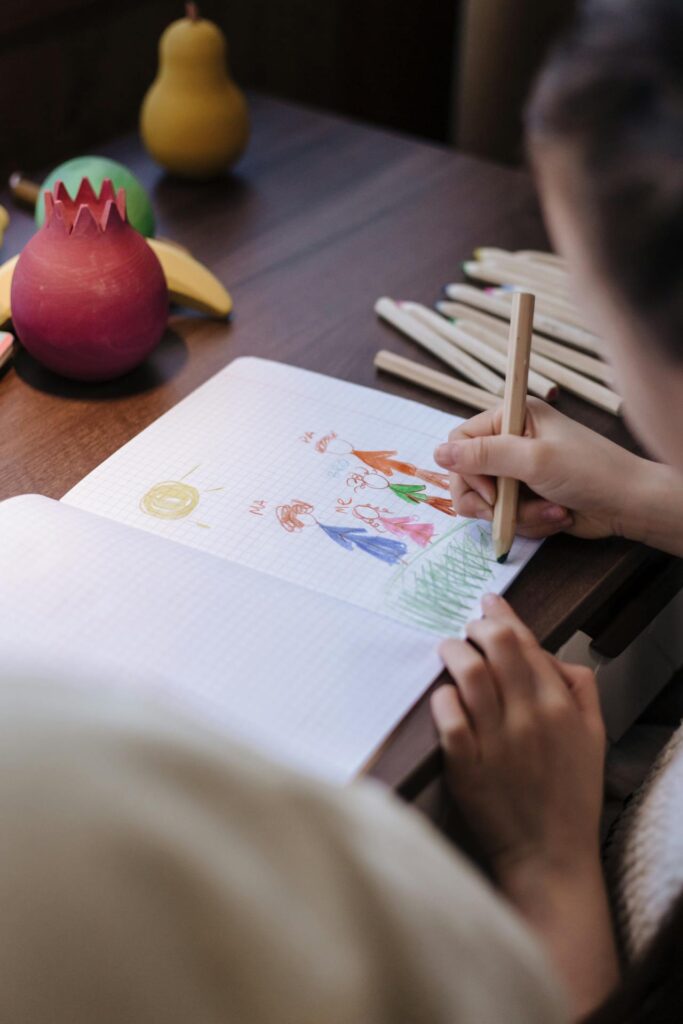
How Parents and caregivers can support the development of drawing skills?
1. Providing an exciting and open environment with appropriate art materials.
2. They should be encouraged to use creative thinking and their schemas to create around the concept of We, Action, and Where.
3. Provide children with opportunities to draw from life or reference materials can help them develop their observational and drawing skills.
4. Here are a few examples of these concepts: Playing on the slide at the playground with my friends, Helping to plant a garden with my mommy at home, and jumping rope with my friend at the park.
Dawning Realism Stage or Gang Age (9-11 years old)
They begin to compare their work to others and their inner critic will appear.
This stage is also referred to as the Gang Age Stage as they start to figure out their social identity and the importance of belonging to a group.
What to expect
– Less spontaneous and more stiffness in drawings
– Three-dimensional objects with shading
– Generally, girls like to draw nurturing scenes, fantasies, dreams, designs, fanciful figures, and horses. Boys, generally like to draw war scenes, science-fiction scenes, action heroes, airplanes, cars, ships, guns, and spaceships.
– Overlapping shapes
– No understanding or shade or shadow
– More aware of clothes
When children reach this stage, they start to achieve a level of realism where they replace the schema of the previous stage with a more realistic representation due to the awareness of the world around them. A child’s drawing during this stage will be a combination of their internal perception and objective reality. Children’s drawings tend to be more formal and stiff as they tend to focus less on action and feelings and more on achieving a level of realism.

How can parents and caregivers support stages of artistic development?
1. Making them aware of gender differences and similarities, their uniqueness and personal identity, and the natural and man-made environment.
2. Encouraging children to draw from observation, imagination, and memory can help them develop their creativity and artistic vision.
3. Parents need to provide children with a supportive and encouraging environment to express themselves through art.
Pseudorealistic Stage (12-17) years old
This is the stage where the product becomes the most important thing to the child.
What to expect
– Increasing criticism of own work
– The human face is drawn closer to the correct proportions
– End of spontaneous art
– Objects further away are diminished in size
– Light, shadow, and motion are seen in drawings
This is the final stage, your child’s drawings will continue to evolve as they are more concerned with their artistic skills. Frustration is common during this stage as they try to draw to reflect the reality they see. During earlier stages, it could be seen that the process of drawing was of most importance as opposed to this stage. They are caught up with the visual perception of onlookers. They may also begin to experiment with more advanced mediums and tools, such as charcoal, pastels, and digital art software.
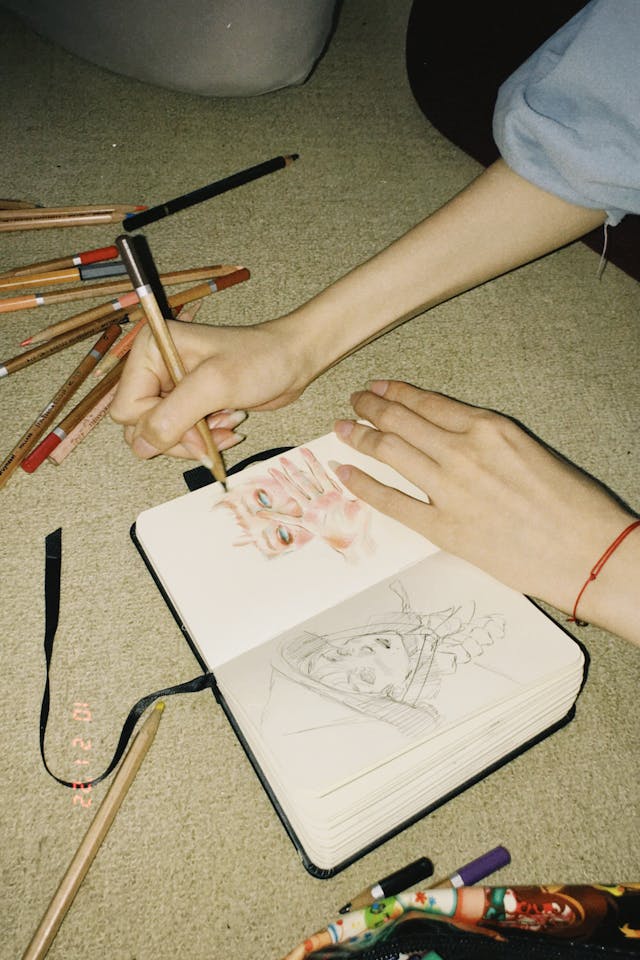
How can you encourage children’s drawing skills?
1. Comfort them during their frustrations
Frequently asked questions:
1. What are the stages of drawing development?
– SCRIBBLE. (2 to 4 years)
– PRESCHEMATIC. (4 to 7 years)
– SCHEMATIC. (7 to 9 years)
– DAWNING REALISM. (9 to 11 years)
– THE PSEUDOREALISTIC STAGE. (11 to 17 years)
2. What does drawing develop in children?
Drawing is a form of self-expression. It helps children to communicate their feelings, ideas, and view point. Drawing develops fine motor skills and hand-eye coordination.
3. What are the developmental milestones for drawing body parts?
During the preschematic stage (4-7 years) they will start making their first human image with a head and legs. During the schematic stage (7-9 years) they will draw entire human body with head, legs, arms, and body.
Conclusion
Drawing is not just for artistic expression. The simple act of drawing has significance in tracking childhood development. It is a fundamental skill that should be fostered in early childhood. By recognizing the development stages of drawing parents and caregivers can help to nurture creativity, critical thinking, and motor skills.
If your little one is not progressing through the stages of drawing development as she should then it is best to see an occupational therapist.

